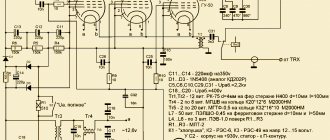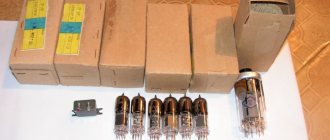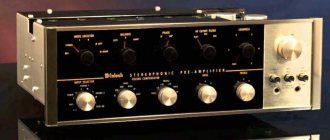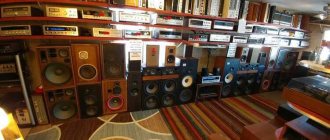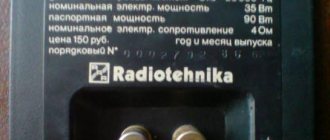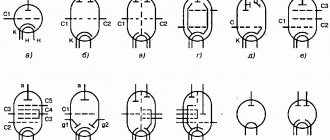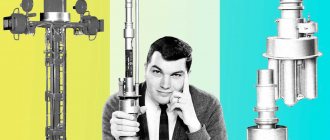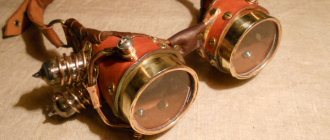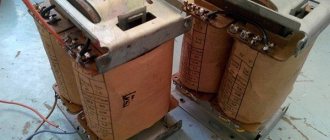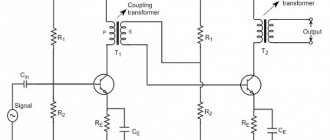Naim NAP140 - Chinese whale (Upd)
We will talk about the Chinese clone of the Naim Nap 140 amplifier and the previous Naim Nac 152 XS.
The euphoria from a successful assembly passed with more serious listening and measurements, and some adjustments had to be made to bring the sound to a decent level. But again I want to make several options for different elements from Naim. This is another version of the preamp, and another version of the power amplifier, and try it with phono preamplifiers... And maybe only then there will be a fresh and comprehensive article. In the meantime, what happened at the very beginning: Buying expensive high-fidelity audio equipment in a store is not the only way to achieve your cherished goal. Independently calculating the amplifier or using ready-made circuits is also an option, but not for everyone. There is a middle ground between these two options, which can be a compromise between financial costs and your efforts - ready-made kits (sets) of amplifiers that only need to be soldered. And for those who are especially lazy, you can order such kits already soldered and tuned. If you decide to buy a kit clone of a famous amplifier (sets of clones of amplifiers Marantz 9, Quad 450, Musical Fidelity, Naim, etc. are available in China), then of course no one guarantees you a final result similar to the original product, but also the discovery of a new level of sound, if everything it will work out, you will not be disappointed. We can only note that the cheapest option for purchasing a kit is an unsoldered set of boards and parts. But don't be happy about the low price of such a set (Naim NAP140 costs from 3200 to 5600 rubles), since the set does not include a transformer. A transformer can cost from 2-3 thousand rubles (for example, produced by Torel) or more (foreign). If you can find cheaper ones or repurpose old ones, it will be a significant savings. The second most significant element in terms of costs is the housing. If you decide to order a case from China, then with delivery the piece of hardware alone can cost up to 10,000 rubles! But in Russia they don’t make housings for amplifiers, at most some kind of distribution, poor-looking boxes that you will try to adapt to the inside of the amplifier. If we are to develop skillful hands, then the simplest thing is to make a body from plexiglass. It is perfectly sawn and processed, twisted with bolts and fastenings from motherboards. And after all that, you can also paint it. Another option is to construct the housing from aluminum corners. These options are of course tedious and dreary, especially for those whose hands stick out from other places (like me). How good the clones of famous amplifiers from China are on our website is still in question, we will try and study. But today we already have a pioneer, our active participant on the forum and website - a user with the nickname Vovans. He has already bought a Naim NAP140 amplifier kit. And not only bought it, but also assembled it!
Read on for an excellent review from Vovans about the features of the Chinese whale and its assembly.
After reading Alexander’s reviews and reviews, I wondered - what if I buy not only a DAC, but also an UMZCH (audio frequency power amplifier) from the Chinese? I was most interested in DIY kits that you can solder yourself. I asked Alexander, he named some figure in rubles and recommended not to look below it, and above it maybe you’ll even find something worthwhile, why not. It just got more interesting. This means there is a chance to find something useful. But how? I haven't really found anything on this topic. And what I found was very different from my views and ideas. I didn’t want any domestic developments of our craftsmen - I don’t want to collect UZMCHs for years. And in China, the boards are already ready, and a set of composite radio elements can be immediately purchased. Collecting all this on your own, piece by piece, is a tedious task. Long and expensive. As a last resort, if something is in doubt, you can order it separately and replace it. But I would like to have everything right away so that it would work and some kind of idea could be put together.
I started searching on my own at my own risk. There are so many different names, these whales. But the information on them is off the charts. Yes, and on Chinese whales there are often discussions like - to rock some dead Soviet speakers, modified by the moment and by some mother. And for many, in such topics, headphones for 300 rubles can sound great. On the one hand, there are super specialists who collect the super-developments of our Kulibins, on the other, sorry, rogues who just want to rock. I ended up coming across some Naim. I read our forums. They received extremely mixed reviews. As a rule, the audience was divided into rare units who listened... There are generally only three of them there; at that time I also found those who knew how to read diagrams. The first were delighted, the second threw mud at Naim, his schemes, and those who fell for it. And the circuitry of the 60s is straight out of a textbook, and there is the most transistor sound, and what they haven’t written about this.
Naim's approach is really interesting. By that time, I already knew that all audiophiles were firmly convinced that tantalum capacitors had no place in sound. Their destiny is numbers. And here the tantalums are right in the sound path, and not just in the sound path. What blasphemy.
And I looked at the price of Naim amplifiers. And I thought deeply. There are too many contradictions. Horse price tag, and tantalum in the path! At the same time, the circuitry is primitive. And there are a minimum of elements - the Naim Nap 140 has only 10 transistors per channel (if you exclude protection, which is usually soldered off). They supposedly have interstage electrolytes (tantalum) with the wrong polarity. The output transistors operate in class B! Tantalum and class B!!! Not A or even AB. This is how to trample on the rights of sound lovers. Funny size radiator for both channels:
There are a lot of contradictions, there is a lot of dirt on domestic forums - it’s interesting.
At first I wanted to buy a Naim Nap 200. But I read, read, read the idea: the simpler and lower class (within reasonable limits), the more musical, so supposedly the 200 should be more correct, and the 140 should be more musical. Maybe I completely misunderstood the idea, who knows), but I decided to start my tests with Naim Nap 140.
By the way, they all have similar circuitry. What makes Naim different from the rest is that they took one scheme and licked it for decades. And if you have been listening to one of their amplifiers for 5-10 years, then when you buy a new one, you will hardly be disappointed. It will be almost the same. No desperate throws from side to side, from one extreme to another.
Preamplifier.
Many argue that you cannot hear the famous Naimov sound on one end. It must have a preamplifier. I've looked through everything I have. The Naim Nac 152 XS clone inspired the most confidence. The rest look like some kind of stubs.
I didn’t want to invest in all this and be disappointed. If you take Nap 140, then take the previous one. If we take the previous one, then the best of the clones (is it the best in sound - who knows?) is Nac 152 XS. In terms of price, the latter was more expensive than the amplifier itself and the whole experiment became noticeably more expensive.
To be honest, I didn’t change a lot of things in the circuit, leaving the acoustics and receiver, I didn’t hear any difference - tda1543 in all variations (with tubes, transistors, resistors, op-amp in the exhaust), ak4490 and all that. And I didn’t expect any “wow” when using a separate amplifier. I thought that I wouldn’t notice the difference. And if I do notice it, it will be subtle and there won’t be much meaning in it. But when I turned on the entire assembled Naim clone path, it was "wow" three times. If not more. I didn't expect such a gap. I thought that either I was deaf, or that those who hear a lot have self-hypnosis. But the sound has changed completely! Low! I previously ordered two pairs of bookshelf speakers in Japan, which are still on the way, considering that woofers do not interest me, and quality is more important to me. But with Naim I got low frequencies that I didn't expect from current tower speakers. The whole room began to play along with the music. Floor, sofa, everything. Now the audio preparation of the room is not an empty phrase. On electronic music, even at medium (low) volume there is a feeling of a club. The bass is collected and dynamic. Obviously, the UMZCH controls this matter well. The mids are good, the highs are clean. But the sound itself became somehow more saturated or dense, or I don’t know how to say it. I liked my connection with the receiver because even with quite good volume in the listening room, in the rest of the room the sound is almost inaudible and it doesn’t bother anyone. Now everything has changed. And in the listening room it doesn’t seem to sound very loud, but in the rest you can hear it well. The receiver definitely didn’t play. Movie rattle.
With the Naim Nap 140 coupled with the Nac 152 XS, I began to wonder if I had ordered the Yamaha P2100 for nothing. Because what I have collected suits me very, very much. But you still need to compare. And is an example of English and Japanese sound good? I’m not a master at describing what it sounds like and I can’t describe it in more detail, but I’ve been really delighted for two weeks now. We just have to wait for a comparison with the Japanese one, but we can already confidently say that this set is worthy of both attention and the money invested in it.
AND A LITTLE DEGREE AND DETAILS
In the photo you can see my transformer that I chose for the Nap 140.
Many thanks to the Rostov company Tortrans. For a very reasonable fee, they wound up a 400W 4x30V transformer with a reduced induction of 1.25 Tesla and a screen between the primary and secondary. Not only does it not heat up, it doesn’t even get warmer. I noticed a slight hum only during short circuit.
Transformers for the DAC (16+16+10) and just for the op-amp (16+16) were also ordered. And these are with reduced induction and a screen.
Also, without taking the previous ones, I ordered three for lamp photocorrectors with a high anode voltage and a low-voltage winding with a decent current for anode power. I've already used all three, should I order more? In addition, I will order a 100V 500W step-down trans for the riding Yamaha p2100 and a separate trans for the preamp. At first I thought that the pre and power would be together, but later I decided to make them separate devices with their own trans and housings, and I also want backlit arrows) but more will be written about this later. The transformer is one of the most important elements that makes a significant contribution to the sound. Be it a UZMCH, pre, DAC, phono stage or anything else. And finding someone who winds them well and inexpensively is difficult, I know from myself? Tortrans agreed to meet all questions - audiophile whims about reduced induction, the number of windings that I need, and not those that sell well, they made a screen upon request, offered a good price, they can also impregnate it and wrap it with something it is necessary, but I don’t see the point in it. This does not affect the sound.
In addition, I was their guest. They have a lot of orders from large customers. I'm surprised that they are ready to mess with radio amateurs like me.
Among other things, they make their own tube amplifiers. Single and two stroke. I really regret that I didn’t take a photo of the amplifier board that was shown to me. In general, all the photos in the topic are mine for now. And I always have so many photos that I rarely attach strangers. So you can safely ask questions about any photos in my posts on any topic))
I really recommend Tortrans as I really enjoyed working with them. Many nutritional issues resolved themselves. In two weeks I ordered 6 transformers and there are a number of other plans in this direction. My Naim Nap 140 plays bass perfectly and did not choke even at full power, no background, interference, or hum. Reduced induction and power shifting to iron rather than copper is the key to success for a power generator. I broke my eyes while I was re-reading the forums on this topic. Do you have to approach everything responsibly in order to get the expected result? I wish I could find someone else who makes cases and PPMs (boards) with the same quality and inexpensiveness, and in general you can open your own business.
A few third-party reviews about Naim:
What does NAIM amplifier sound like? This is the sound of a simple circuit worked out to perfection by J. Vereker. Where all the details, with their parameters, are matched to each other as much as possible. Where any “improvement” in the circuit can upset the balanced sound balance and turn the sound into “mediocre transistor”. This is the sound of the output stage, in the B-class, which is quite capable of competing with HI-END tube solutions in SE.
Well, and finally, this is a scheme that is completely ignored, for repetition, on Russian resources... The most concise and accurate description of what is above was formulated by the user GUNFU from Tornado Acoustic:
“As for transistors for audio, please look on the Internet on Western forums for what Naim uses. They “ate the dog” in selecting components for their classic circuit from the RCA reference book. The devices sound excellent, warm, dynamic and without the transistor crunch typical of cheap UMZCHs.”
https://www.tornadoacoustics.ru/forum/7-191-1
This is the “secret of NAIM”.
I’ll also give a review from one person. Well, after this, how can you not try Naim?
For five years now I have been the owner of a set of pre-amplifier and final amplifier assembled according to the concept of the NAIM 250 and pre-series NAC circuits... The difference from the 140 is the presence of a stabilized power supply to the end. This gives power and control of the bass. It is advisable to do this option. There is no point in talking about distortion in this case; for me it is more interesting how it sounds. A company, for example, claims 0.01%, if you check it on a simulator, then 0.05-0.08% will come up, well... SHOULD YOU listen or measure?
If we talk about the nature of the sound itself, it almost completely repeats... a 300V single-ended, but with a SIGNIFICANT ADDITION OF POWER and BASS STRENGTH, while the sound is not limited in the upper range, clear, airy, but without the notorious “brightness”. The listening experience is ABSOLUTELY UNTIRED and musical genres can range from DIANA KRALL to NIGHTWISH - there are no limits. The found characteristic of the sound of the original equipment confirmed my impressions: “the sound is perceived as a class A amplifier, even without feedback...” A familiar musician-guitarist noted the transmission of sound attack. There is definitely NO “transistor” sound! Even avid tube fans listened... The sound is smooth and comfortable. I know that many people no longer perceive such simple schemes, but they sound great. They are mass-produced. Probably not suitable for those who like “catchy”, overly “detailed” sound. But MUSIC LOVES with different genre preferences will probably like it. Yes, and a single-cycle will replace and expand the sound of a tube while maintaining its advantages.
A power stabilization circuit that makes the Nap140 almost a complete analogue of the nap250. Here is another difference between Naim and others - few people use power stabilization in UZMCH. I plan to try and assemble it myself. Although I read from the Chinese that they recommend trying Sigma22:
Source:
https://www.hifidiy.net/..
Pros:
1. Low noise and high PSRR2. No current limitation thanks to output MOSFEs. Sigma22 is capable of delivering large instantaneous current3. High throughput. It is stated that Sigma22 has even lower impedance than the best and rather expensive low-ESR electrolytes. The discharge-charge rate is very high.4. The desired output voltage can be easily set.
The input voltage of S22 should be 8~9V higher than the output voltage to maintain the operation of the MOSFET to achieve the best performance of the regulator. The latter is just perfect for me? I got about 45 on capacitors per shoulder, and for Nap140 30-34 per head.
Quote from correspondence:
“Sounds magical to me. I didn’t expect that my inexpensive acoustics could sound so rich and produce such lows. And high level, clean. »
Yes, that's it! And, an elementary scheme, with hidden potential! Lows and sound DYNAMICS are its characteristic feature. The top is clean and moderately INFORMATIVE, of course there are MINDs of the “BB” type (with small Kg) that can “charm” with crystalline HF, BUT….further will depend on your auditory preference and the ability to adapt to such a presentation….There is a possibility that listening to different music for a long time will not be comfortable.
Even a person who seriously plays the guitar paid particular attention to the DYNAMICS of the sound of the NAIMA-clon strings... It’s right that they started making a set with a pred. Pre provides some of that signature NAIM sound. There is also confirmation from the owners of their branded systems... Stabilized power allows the sound to fully develop and reach the NAP-250 level. And, it is considered one of the... top... embodying all the advantages of the sound of this brand.
“Well, I don’t know, I don’t know. I can’t get enough of them yet.”
The fact of the matter is that an “elementary circuit”, which cannot be shown at domestic technical forums... breaks the mold when it is thoroughly implemented.
And further:
You found a topic that I once opened on Kota... You know, in our country the topic of cloning this amplifier is absolutely not developed, almost from the word “at all.” All those who tried to repeat clone 140 or in a more complete version 250 can really be counted on one’s fingers. On Vega, this is Oleg Trubin (one of the first), then also Timofey from Barnaul (ArtTim), it seems there were also one or two people in his topic, trying... That’s all there. On the Soldering Iron, one person asked what 140 clone is... I tried to explain... and it began... There they have one young and hot (now also a modder), developer of OM... Aplomb... In short, "throwing poop" began ....But, comrade, who was interested, the clone 140 that was sent - at least gathered the opinion that this is “obvious crap” - there was no response from him.
Yes, and in the profile topic of “mercenaries” there is a topic on assembling 200... I also showed up a little in it, as well as a user from Penza (Igor, it seems), who also on the world forum, recently posted a couple of messages... Yes, and there’s more one friend purchased a POWER-STABILIZER kit, in the form of sets of ready-made boards from AVONDALE…. Well, that’s all, roughly speaking, for the whole country... I was also hooked on this brand by a friend, WITHOUT INITIALLY ADVERTISING THE BRAND AND SCHEME, the MIND itself... And, just by letting me listen... And, at that time, I actually had an SE on the Svetlanovskaya 300 . That is, there is not a word of fiction here: NAIM may well become a replacement for single-cycle in the A-class…. I assure you, if they had shown me the diagram in advance and told me about it, I would NOT BELIEVE it! It’s too classic and the mode is almost B, and this is... not A at all....
By the way, I have a nap 140 with an “improvement package” for 3 kopecks. The package contains two pairs of differential stage transistors (input) almost perfectly matched, but with erased markings. What’s interesting is that they are different, as can be seen from the place where they broke off. And according to the scheme they are the same. Also other parts of resistors and capacitors. I didn’t understand anything from the description of the improvement, but I immediately soldered it on. I am attaching a screenshot:
Having a diagram and a photo of an empty board, it is easy to figure out what has changed. Scheme:
Let's say thank you to Vovans for such an interesting study, and in conclusion, I want to hope that the topic of using clone whales will not end with this material, but will be developed in the form of assembling and listening to other amplifier models. All the best sound in your home system!
Parameters and description of the kit
- Rated power: 25W RMS
- Input sensitivity: 1.5V
- Input impedance 100 kohms
- Input Connector: Linear RCA
- Speaker output: 4 and 8 ohms
- Distortion: Less than 0.5% half power, 1% full power.
- Frequency range: 8 Hz - 20 kHz +0/-1dB at rated power
- Signal to noise ratio: less than 80dB
- Lamps: Gold Lion KT88, NOS JAN Philips 5751
- Power consumption: 80 W (each monoblock)
- Weight: 6 kg (each monoblock)
- Dimensions: 200 mm (W) X 220 mm (H) X 300 mm (D)
Testing the assembled amplifier
All sine wave output signals (at 25 W output power) that looked between 20 Hz and 20 kHz were perfect copies of the input signal. The overall gain of the amplifier is about 10.3 (20.3 dB). With an output level of about 15 W, the frequency range was flat between 20 Hz - 13 kHz, and roll-off was about 0.2 dB at 20 kHz. So I recommend similar constructors to everyone; they work no worse than ready-made tube amplifiers, industrially assembled, for several thousand dollars!
Discuss the article KIT FOR ASSEMBLY OF A TUBE AMPLIFIER
Making a convenient stand for multimeters of the DT-830B (M-830B) series.
Converter for replacing a 9-volt multimeter battery with a 1.5-volt one.
Circuit of a proven 12V to 220V voltage converter, based on a computer power supply transformer.
Delivery is carried out by mail or transport, "KiT", "ZhelDorExpedition", "Business Lines", "Baikal-Service" and "PEC", as well as SDEK. We send parcels for orders over 550 rubles.
ULF on KT88 - assembly and setup
To assemble the kit, you only need to have basic soldering skills, and the whole job will take several evenings. The kit contains many parts, but following the instructions will ensure successful results. Before you start installing the equipment, you need to study the circuit diagram so that it is imprinted in your memory - it will be easier to assemble it, knowing approximately what goes where.
Power supply and adjustment of the balance between the output stage lamps. This is done using a multimeter, which is inserted at the test points on the top of the amplifier and then adjusted with a 25 ohm potentiometer. After an hour of work, you should check the balance again. I had a discrepancy of only a few milliamps over a month of daily use.
After balancing the offset, I connected the Fostex FE206E acoustics (96 dB / 1 W) and checked for hum. Everything is fine. For the PSU, I was hoping to get about a 60 second power-up delay, but couldn't get more than about 30 seconds.
The radiator for the LM317 was quite hot - about 100 C (the maximum operating temperature of the LM317HVT is 125 C). The temperatures of the power transformer and audio output were 65 C to 45 C respectively.
